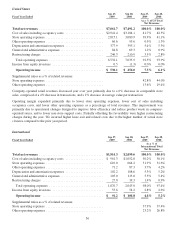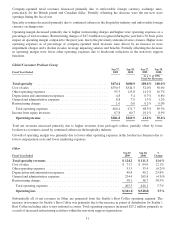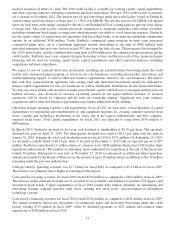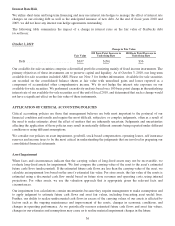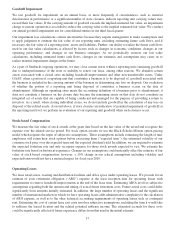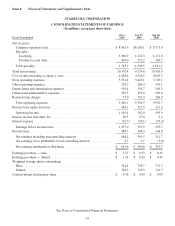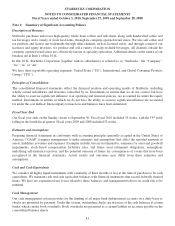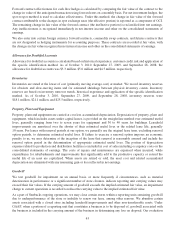Starbucks 2010 Annual Report Download - page 44
Download and view the complete annual report
Please find page 44 of the 2010 Starbucks annual report below. You can navigate through the pages in the report by either clicking on the pages listed below, or by using the keyword search tool below to find specific information within the annual report.Self Insurance Reserves
We use a combination of insurance and self-insurance mechanisms, including a wholly owned captive insurance
entity and participation in a reinsurance treaty, to provide for the potential liabilities for certain risks, including
workers’ compensation, healthcare benefits, general liability, property insurance, and director and officers’ liability
insurance. Liabilities associated with the risks that are retained by Starbucks are not discounted and are estimated, in
part, by considering historical claims experience, demographic factors, severity factors and other actuarial
assumptions. The estimated accruals for these liabilities could be significantly affected if future occurrences and
claims differ from these assumptions and historical trends.
Income Taxes
We recognize deferred tax assets and liabilities based on the differences between the financial statement carrying
amounts and the respective tax bases of our assets and liabilities. Deferred tax assets and liabilities are measured
using current enacted tax rates expected to apply to taxable income in the years in which we expect the temporary
differences to reverse. We routinely evaluate the likelihood of realizing the benefit of our deferred tax assets and
may record a valuation allowance if, based on all available evidence, we determine that some portion of the tax
benefit will not be realized.
In addition, our income tax returns are periodically audited by domestic and foreign tax authorities. These audits
include questions regarding our tax filing positions, including the timing and amount of deductions taken and the
allocation of income among various tax jurisdictions. We evaluate our exposures associated with our various tax
filing positions and record a related liability. We adjust our liability for unrecognized tax benefits and income tax
provision in the period in which an uncertain tax position is effectively settled, the statute of limitations expires for
the relevant taxing authority to examine the tax position, or when more information becomes available.
Deferred tax asset valuation allowances and our liability for unrecognized tax benefits require significant
management judgment regarding applicable statutes and their related interpretation, the status of various income tax
audits, and our particular facts and circumstances. We believe that our estimates are reasonable; however, actual
results could differ from these estimates.
RECENT ACCOUNTING PRONOUNCEMENTS
See Note 1 to the consolidated financial statements in this 10-K.
Item 7A. Quantitative and Qualitative Disclosures About Market Risk
The information required by this item is incorporated by reference to the section entitled “Management’s Discussion
and Analysis of Financial Condition and Results of Operations — Commodity Prices, Availability and General Risk
Conditions” and “Management’s Discussion and Analysis of Financial Condition and Results of Operations —
Financial Risk Management” in Item 7 of this Report.
38




